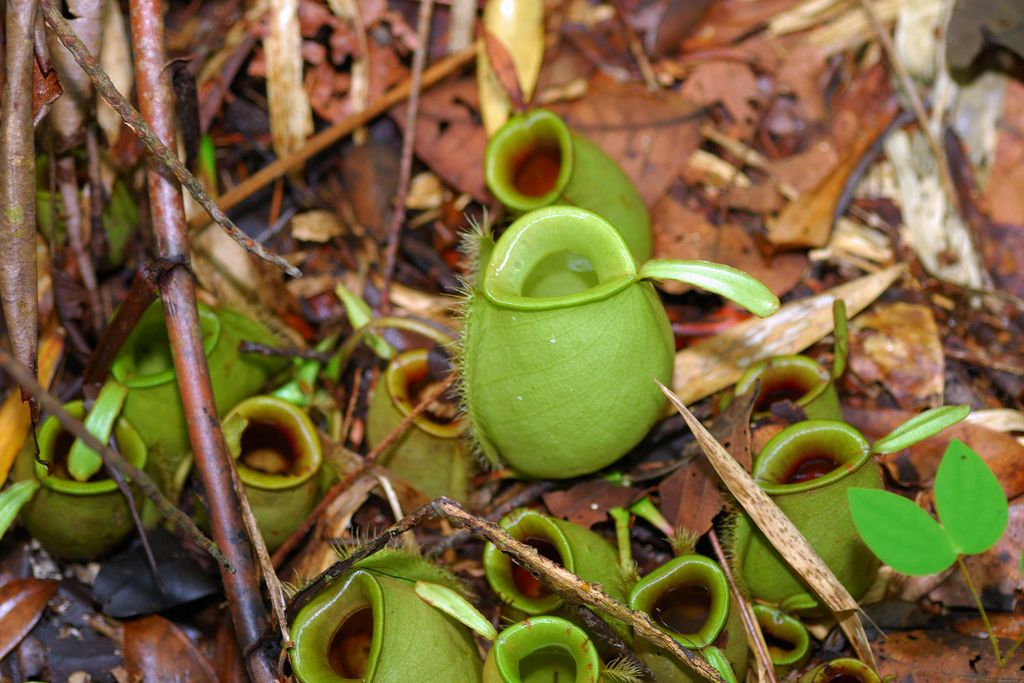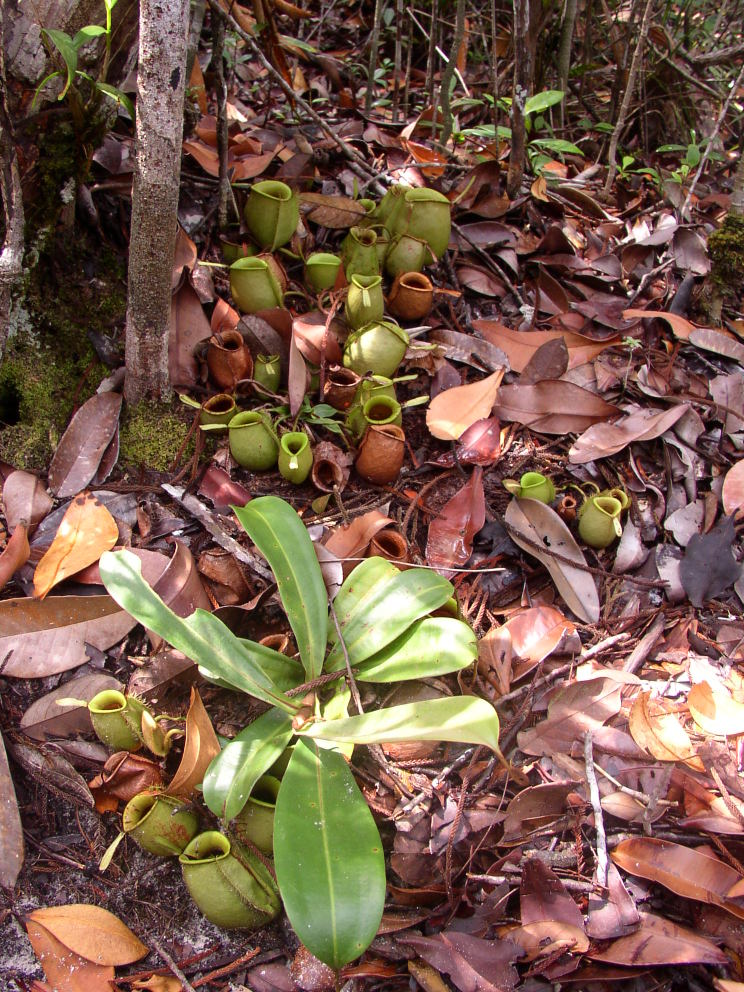
Nepenthes ampullaria is a very distinctive and widespread species of tropical pitcher plant, present in Borneo, the Maluku Islands, New Guinea, Peninsular Malaysia, Singapore, Sumatra, and Thailand.
Nepenthes ampullaria, unlike other members of its genus, has evolved away from carnivory and the plants are partly detritivores, collecting and digesting falling leaf litter in their pitchers.
In the 1996 book Pitcher-Plants of Borneo, N. ampullaria is given the vernacular name flask-shaped pitcher-plant. This name, along with all others, was dropped from the much-expanded second edition, published in 2008.

The stem of N. ampullaria is light brown in colour and may climb to 15 m in height. Leaves are light green, up to 25 cm long, and 6 cm wide. Pitchers are produced at the ends of short tendrils no more than 15 cm long.
The urceolate pitchers are generally quite small, rarely exceeding 10 cm in height and 7 cm in width. The peristome is greatly incurved, with the inner section accounting for around 85% of its total cross-sectional surface length. Upper pitchers are very rarely produced and are considerably smaller than those formed on rosettes or offshoots. Pitchers range in colouration from light green throughout to completely dark red, with many intermediate forms recorded. The pitchers of N. ampullaria from Sumatra and Peninsular Malaysia are almost exclusively green throughout or green with red speckles; the red forms are mostly confined to Borneo. A large-pitchered form has been recorded from New Guinea.

The inflorescence of N. ampullaria is a dense panicle. It is the only Nepenthes species recorded from Sumatra or Peninsular Malaysia that produces paniculate inflorescences.
All parts of the plant are densely covered with short, brown hairs when young. The indumentum of mature plants is more sparse, except on the inflorescences.
No comments:
Post a Comment